Nutrition in Plants
"The mode of nutrition in which organisms make food for themselves from simple substances is called autotrophic nutrition."
All living organisms require food to grow, repair damaged parts of their bodies and get the energy to carry out life processes. Plants can make their food themselves but animals including humans cannot. Animals get ready-made food from plants or from animals that eat plants. Thus, animals are directly or indirectly dependent upon plants for food.
1.0Nutrition
Nutrition is the process of intaking as well as utilization of food. There are two modes of nutrition: (1) Autotrophic nutrition (2) Heterotrophic nutrition
(1) Autotrophic nutrition: (auto-self; trophos - nourishment)
The mode of nutrition in which organisms make their own food from simple inorganic substances is called autotrophic nutrition. Therefore, green plants are called autotrophs. Autotrophs prepare their own food through the process of photosynthesis. They are also known as producers as they are the only source of producing food. All the animals directly or indirectly depend upon plants for food. (2) Heterotrophic nutrition: (heteros- other; trophos - nourishment)
The mode of nutrition in which organisms cannot make their own food but obtain food from other organisms, such a mode of nutrition is called heterotrophic nutrition and the organisms are called heterotrophs. They obtain food either from plants or from animals. E.g. Animals, fungi and some bacteria.
Photosynthesis: (Photo-light; synthesis-to combine)
2.0Food making Process in Plants
Photosynthesis is the process of synthesis of organic food (glucose) from inorganic carbon dioxide and water, using solar energy captured by chlorophyll pigments. During this process oxygen is released. The glucose thus formed ultimately gets converted into starch. The starch is also a carbohydrate.
- Photosynthesis is the only process that converts solar energy into chemical energy. Photosynthesis takes place in the green parts (mostly in leaves) of the plant because of presence of chlorophyll pigments inside their cells. Therefore, leaves are the food factories of plants.
- Besides leaves, photosynthesis also takes place in green stems and green branches. The desert plants have scale or spine-like leaves to reduce loss of water by transpiration. These plants have green stems which carry out photosynthesis.
Building Concepts
1. What is a cell?
Explanation
Every living organism is made up of tiny units called cells. Cells can be seen only under the microscope. Some organisms are made of only one cell. The cell is enclosed by a thin outer boundary called the cell membrane. Most cells have a distinct, centrally located spherical structure called the nucleus and is surrounded by a jelly-like substance called cytoplasm.
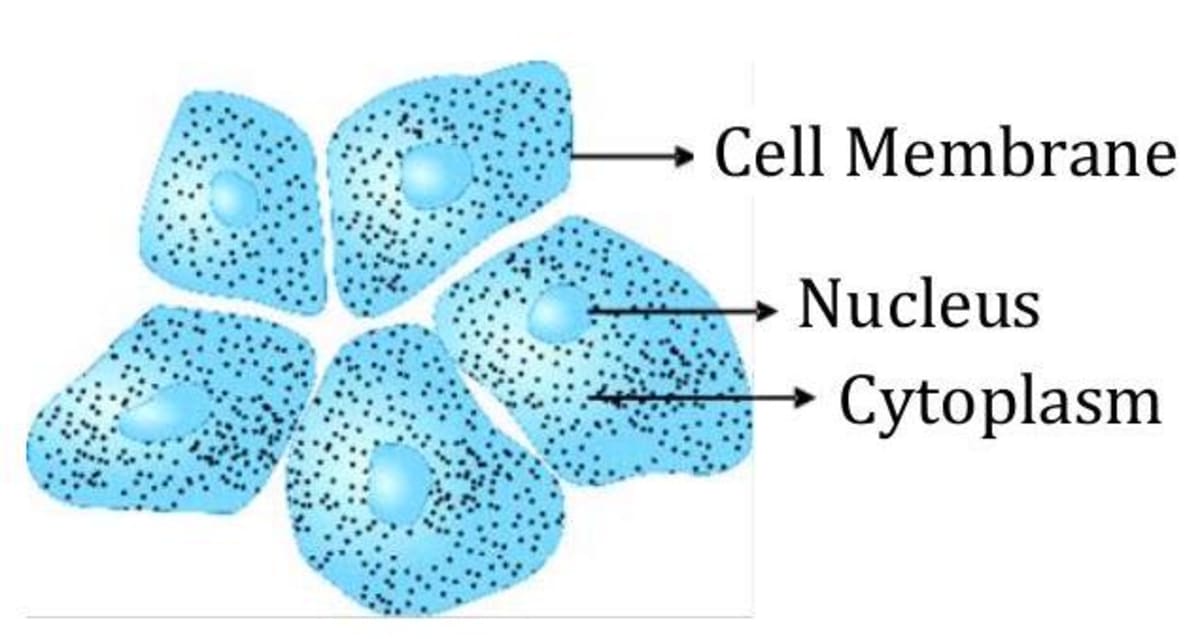
Requirements in Photosynthesis: Green plants require four things (sunlight, chlorophyll, carbon dioxide and water) to prepare their own food.
(i) Sunlight: Sun is the natural source of light which provides solar energy to the plant. Solar energy is converted into chemical energy by plants through photosynthesis. Thus, sun is the ultimate source of energy.

(ii) Chlorophyll: Chlorophyll pigment is present in all the green parts of the plant in cell organelle called chloroplast. It traps solar energy from sunlight. Photosynthesis cannot take place without chlorophyll. Chloroplast is also called "Kitchen of the cell."
- The leaves other than green also have chlorophyll. The large amount of red, brown and other pigments mask the green colour. Photosynthesis takes place in these leaves also.
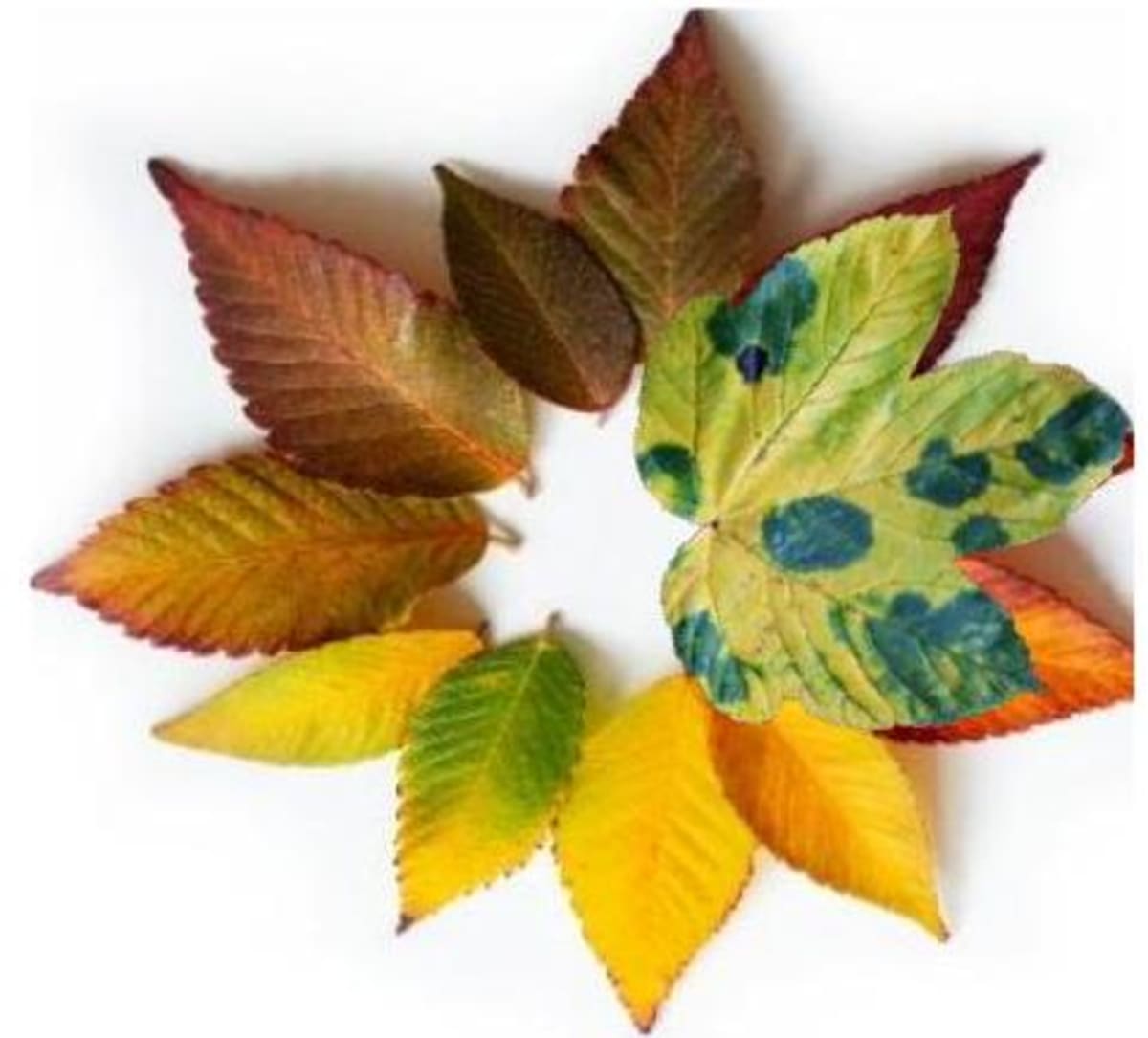
Leaves of different colours
- Slimy, green patches in ponds or in other stagnant water bodies are generally formed by the growth of organisms called algae. Algae are green in colour as they contain chlorophyll and they can also prepare food by photosynthesis.
(iii) Carbon dioxide: Carbon dioxide is obtained from the atmosphere through stomata present on the leaf surface of the plants.
(iv) Water: Water and minerals present in the soil are absorbed by the roots and are transported to the leaves by the vessels which run like pipes throughout the root, the stem, the branches and the leaves.
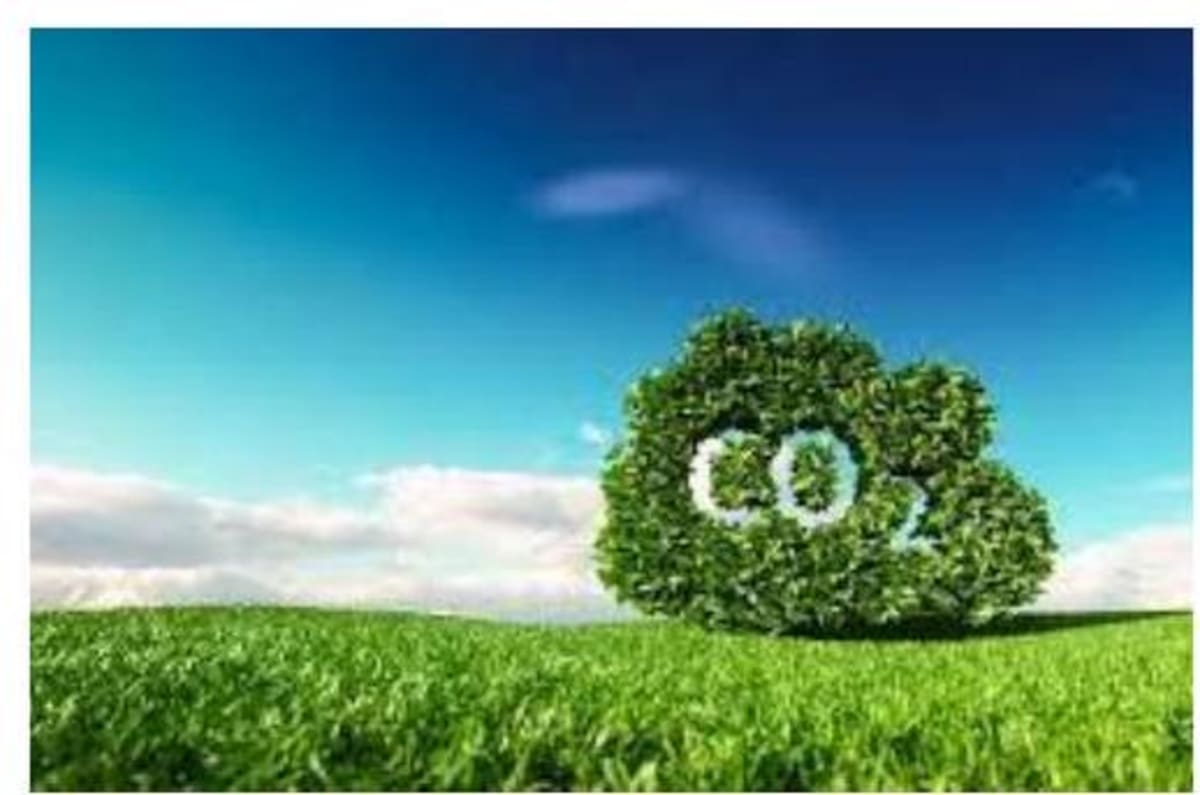
2. What would happen to the life on the Earth in the absence of photosynthesis?
Explanation
In the absence of photosynthesis, there would not be any food. The survival of almost all living organisms directly or indirectly depends upon the food made by the plants. Besides, oxygen which is essential for the survival of all living organisms is produced during photosynthesis. Therefore, in the absence of photosynthesis, life would be impossible on the Earth because there would be neither food nor oxygen available to organisms.
3.0Role of the leaf in Photosynthesis
Stomata: The tiny pores present on the surface of the leaves surrounded by two kidney shaped guard cells are called stomata. Guard cells regulate the opening and closing of stomata. These are kidney shaped cells which cover single stoma. They contain chloroplast also.

Functions of stomata
(i) Exchange of gases takes place (carbon dioxide from air is taken in and oxygen is released) through stomata.
(ii) Transpiration takes place through stomata. Transpiration is the process of loss of water in a vapour form from aerial parts of plants.
Building Concepts
1. Why does photosynthesis occur during day time only?
Explanation
Photosynthesis occurs during daytime because sunlight is present during daytime which is necessary for photosynthesis process.
Synthesis of food other than carbohydrates
Plants synthesize carbohydrates through the process of photosynthesis. The carbohydrates are made up of carbon, hydrogen and oxygen. These are used to synthesize other components of food such as proteins and fats. But proteins are nitrogenous substances which contain nitrogen. Nitrogen is present in abundance in gaseous form in the air. However, plants cannot absorb nitrogen in this form. They get nitrogen in two ways.
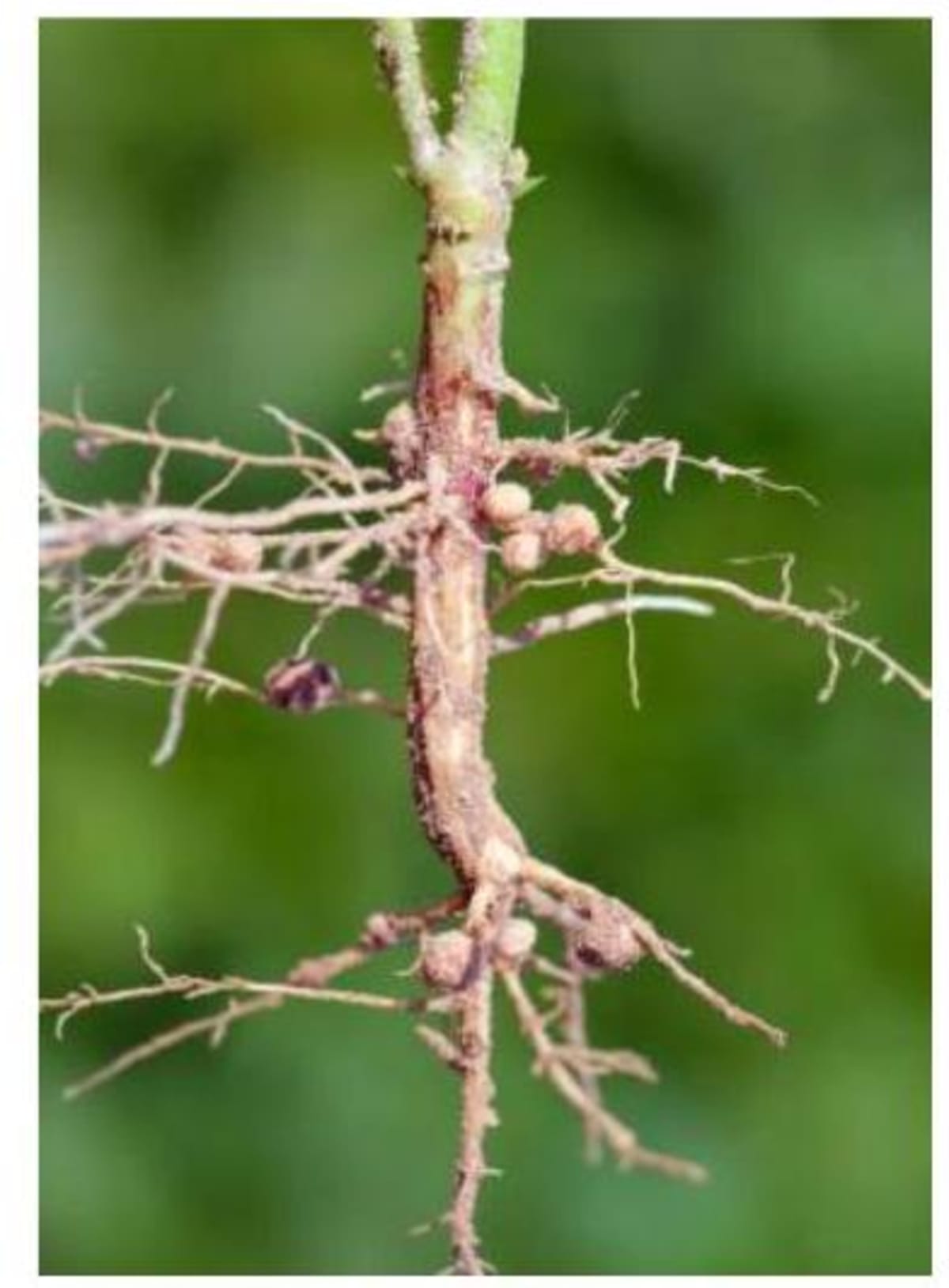
(i) Soil has certain bacteria that convert gaseous nitrogen into a usable form and release it into the soil. These soluble forms are absorbed by the plants along with water.
(ii) Farmers add fertilizers rich in nitrogen to the soil by which plants fulfil their requirements of nitrogen along with the other constituents.
4.0Replenishing Nutrients in the Soil
Plants absorb mineral nutrients from the soil. So, their amount in the soil keeps on declining. Fertilizers and manures contain plant nutrients such as nitrogen, potassium, phosphorus, etc. These nutrients need to be added from time to time to enrich the soil. Usually crops require a lot of nitrogen to make proteins. After the harvest, the soil becomes deficient in nitrogen. They need nitrogen in a soluble form. The bacterium called Rhizobium can fix atmospheric nitrogen and convert it into a soluble form. But Rhizobium cannot make its own food. So, it lives in the roots of gram, peas, moong, beans and other legumes and provides them with nitrogen. Pulses (dals) are obtained from leguminous plants. In return, the plants provide food and shelter to the bacteria. They have a symbiotic relationship. This association is of great significance for the farmers. They do not need to add nitrogen fertilizers to the soil in which leguminous plants are grown.
5.0Other Modes of Nutrition in Plants
There are some plants which do not have chlorophyll. They cannot synthesize their own food just like humans and animals. Such plants depend on the food produced by other plants. They follow heterotrophic mode of nutrition.
- Saprotrophic Nutrition: Mode of nutrition in which organisms take in nutrients from dead & decaying matter is called saprotrophic nutrition. Plants which use such mode of nutrition are called saprotrophs. These plants are usually whitish. They have no green leaves, vary often they do not have leaves at all.
They grow in places with lots of rotting dead leaves, often in deep shade in tropical forests. Some examples are Indian pipe and Coral root.
- Fungi also grow on pickles, leather, clothes and other articles that are left in hot and humid weather for long time.
- Many fungi like yeast and mushrooms are useful, but some fungi cause diseases in plants, animals and humans. Some fungi are also used in medicines. Fungi are also capable of digesting dead and decaying matter. They secrete digestive juices on the dead and decaying matter and convert it into a solution. Then they absorb the nutrients from it. Some examples of fungi are:
(i) Mushroom: Mushroom are fluffy umbrella-like patches growing on rotting wood during the rainy season.

(ii) Bread moulds: Bread moulds are cotton-like threads spread on the piece of bread.
Contaminated bread with mould should not be consumed as it produces toxins which is harmful to our health.
- Parasitic Nutrition: There are certain plants which lack chlorophyll pigments (without which photosynthesis cannot take place) and are thus parasites on other plants. These plants obtain the food prepared by other organisms. For example, Cuscuta (Dodder),
Rafflesia, etc. Cuscuta (Amarbel) lacks leaves and its stem are yellow tubular structures twining around the stem and branches of a tree and the roots are modified into specialized structures called haustoria. Haustoria penetrate the stem of the host and draws nutrition from the vascular system of the host directly. Cuscuta is a total stem parasite.

A parasite is an organism that lives in or on another organism and derives nutrients from it (host). Lice and leeches that suck our blood are also parasites.
- Insectivorous or carnivorous plants: Insectivorous plants are autotrophic but obtain nitrogen from insects. They generally grow in the soil deficient in nitrogen. Insectivorous plants are partial heterotrophs. For example: Nepenthes or Pitcher plant, Venus flytrap, Sundew etc.
(i) Pitcher plant: The pitcher-like structure is the modified part of the leaf. The petiole is tendrillar. The lamina is modified into a large pitcher, the apex of the leaf forms a lid which can open and close the mouth of the pitcher. Inside the pitcher there are hairs which are directed downwards.

(ii) Venus flytrap: Its leaf contains two lobes. The inner surface has short stiff hairs and is reddish in colour. The colour attracts the insects which when sits on the leaf stimulate the lobes to shut down. Glands on the leaf surface then secrete enzymes that digests the insect's body.

Venus flytrap
Building Concepts
How do insectivorous plants like pitcher plant obtain its nutrition?
Explanation
When an insect lands in the pitcher, the lid closes and the trapped insect gets entangled into the hairs. The insect is digested by the digestive juices secreted in the pitcher. Such insecteating plants are called insectivorous plants.
6.0Symbiotic Relationship
Mutually beneficial association in which two organisms live together and share shelter and nutrients. This is called symbiotic relationship. For example: Mycorrhiza and Lichen.
(i) Mycorrhiza: The symbiotic association of the mycelium of a fungus with the roots of certain plants (conifers and orchids). The tree provides nutrients to the fungus and in return, receives help from it in taking up water and nutrients from the soil. This association is very important for the tree.
(ii) Lichens: Association in which a chlorophyll-containing partner (alga), and a fungus live together. The fungus provides shelter, water and minerals to the alga and in return, the alga provides food which it prepares by photosynthesis.
7.0Biology Diagrams made Easy
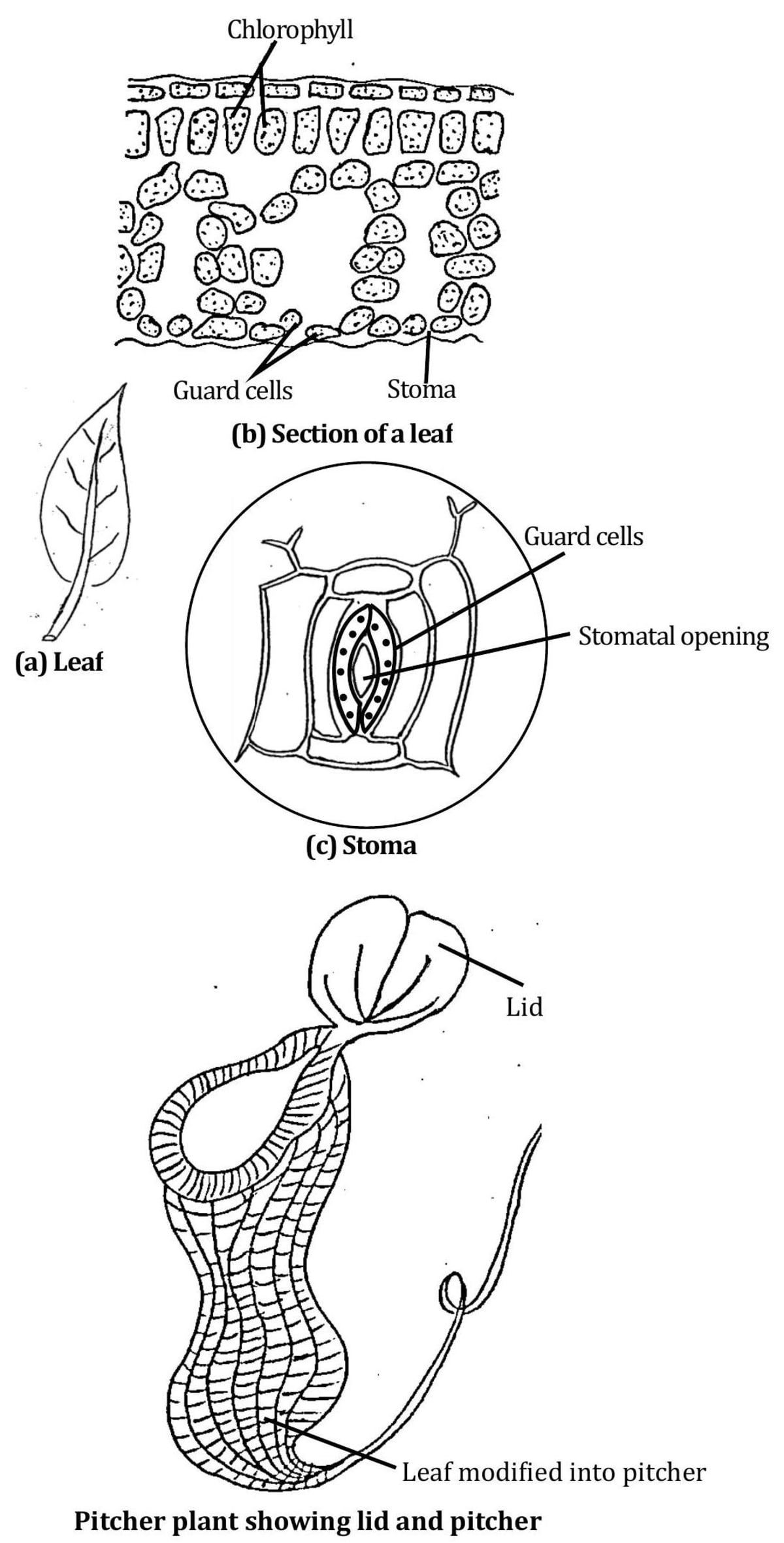
8.0Chapter At a Glance
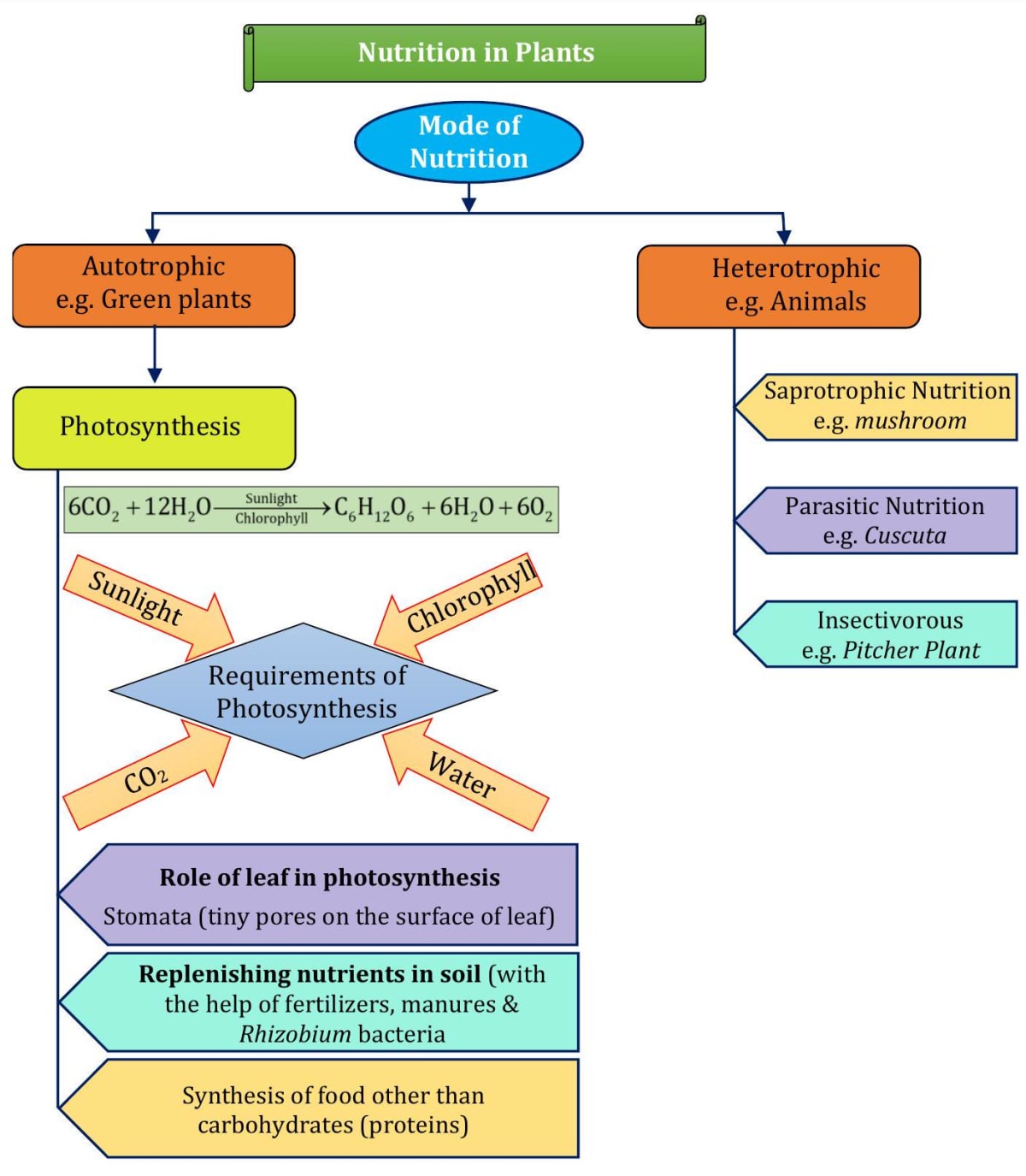
SOME BASIC TERMS
- Pigment: A substance that gives colour to things.
- Essential : Completely necessary.
- Traps : To catch and keep something.
- Slimy : Thick and wet.
- Organelle (Little organs) : Subcellular structure that perform specific function in a cell.
- Fungal spore : Microscopic reproductive structure for fungi.
- Entangled : Caught in something
- Mycelium : Network of fungal threads (hyphae).
- Synthesize : Make something.
- Association : A connection between two organisms.
Related Article:-
Join ALLEN!
(Session 2026 - 27)